It’s that time of the year, when spring is arriving and the ground is warming up and it’s time to sow some seeds directly on the allotment. I thought it might be useful to share the method that I use. It works for me, on my allotment, but there are other hints and tips, and some seeds need to be sown in other ways, but generally speaking for pretty much everything that I sow from seed directly into the ground this is the method that I use. Last weekend I sowed parsnip, turnip and radish. Let me walk you through the sowing of the parsnips.
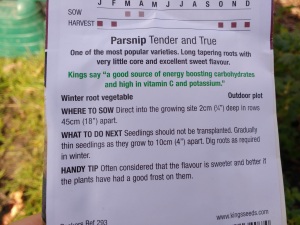 Firstly, read the seed packet.
Firstly, read the seed packet.
I know I said that I use the same method, and I do, but you need to check there is nothing special about the seed that you’re sowing. Some seeds come “coated”, which can irritate your skin, and it’s advisable to wear gloves.
More simply you want to make sure that you’re sowing your seeds at the right time, and that you space them correctly and know whether you’re going to need to thin them or any other ongoing care that you’ll need to provide once they’ve germinated.
 Next I mark out where I’m going to sow.
Next I mark out where I’m going to sow.
Normally this is a straight row. I use a line, pegged at either end to keep it taught, and to stop it moving around.
This helps me to keep the row straight during the next step, and also gives me a guide as to where the seed is going. It doesn’t have to be perfect, it’s only a guide!
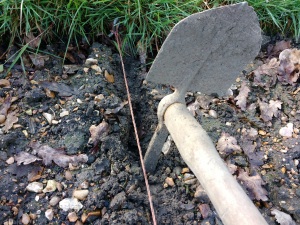 I then run the narrow end of my adze alongside the line to create a drill.
I then run the narrow end of my adze alongside the line to create a drill.
I’ve had this tool for a while, and it was given to me by someone who couldn’t find a use for it. It’s perfect for this job, and depending on how deep or wide I need the drill to be, I’ll use one end or the other. For the parsnips I only need a narrow, shallow drill so I used the smaller, narrower end.
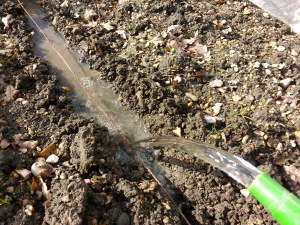 Once I’ve made my drill, I water it.
Once I’ve made my drill, I water it.
I do this before the seeds go in. This means that the seeds are going onto slightly damp soil, which stops them from blowing out of the drill if it’s windy, and also aids germination.
I’ll still water them again when the seeds are sown, this is a pre-sowing water.
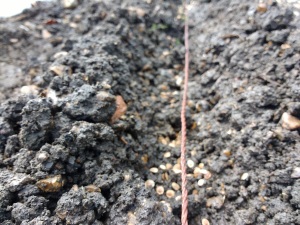 Next I’ll sow the seeds, following the seeds, following the packet instructions, but also using my own experience and knowledge.
Next I’ll sow the seeds, following the seeds, following the packet instructions, but also using my own experience and knowledge.
As these are parsnips I tend to sow more densely than recommended, because germination is notoriously poor with most varieties of parsnips. If they go the other way, and they all come up, then I’ll have more thinning out to do later, but that is preferable to having more germination or patchy rows taking up a lot of space for very few plants.
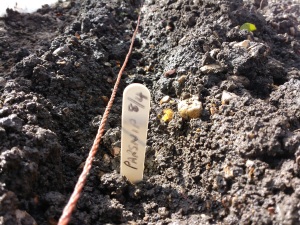 Finally I’ll mark the row at each end, with the seed type and the date. I also keep a record of what I’ve sown when in my notebook, just so I can keep an eye on when things should start to appear.
Finally I’ll mark the row at each end, with the seed type and the date. I also keep a record of what I’ve sown when in my notebook, just so I can keep an eye on when things should start to appear.
Then I’ll remove the line, backfill the drill by scraping the soil back over with a rake, and water covered-over drill well. I’ll do this even if rain is forecast, as often forecasts are wrong.
That’s it. Simple. On to the next row, and next seed type.
Do you have any tried and tested methods that work for you? If so leave me a comment below, I’d like to hear what they are and maybe try them myself.
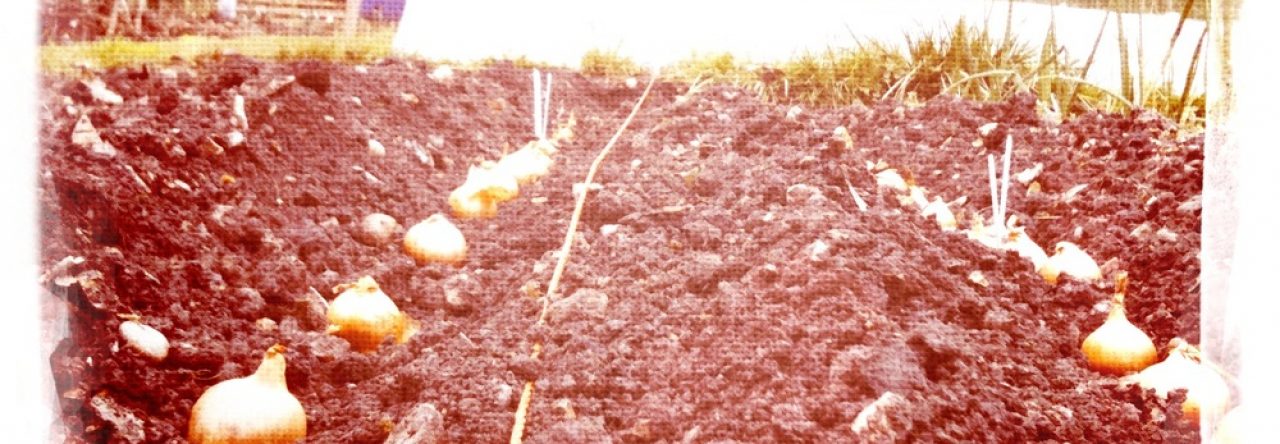
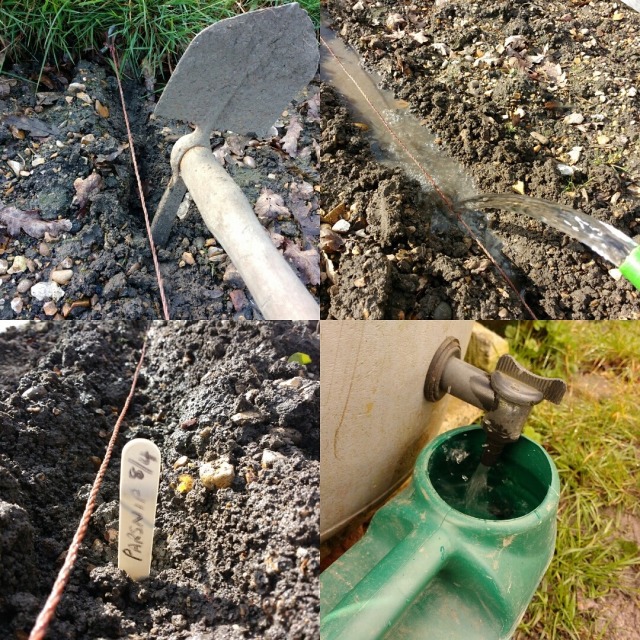
Very good tips, Alan! We pretty much do the same thing you do, when it comes to sowing seeds. These are pretty simple, yet effective, steps and worked well for us so far.
Looking good!
Thanks David, I’m always a bit nervous until they actually germinate though!
Great tips, thank you. The tool looks very useful too, need to find myself one! Glad to see you are sowing in stony soil, mine is quite stony and hoping to get my beetroot, carrots and spring onions in at the weekend
Good luck! I’ve never really had a problem with the stones and I get good beetroot & carrots, so hopefully you will too. Your preparation has been good, so don’t see why you won’t get some good crops
That’s great news 😀 thank you, fingers crossed!
Hope they grow! Will be using some of your ideas for planting as I’ve never grow on such a large scale before. Thanks! ☺